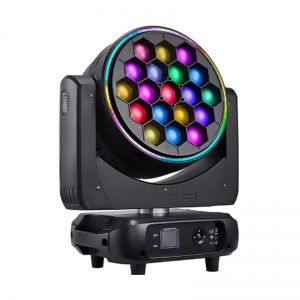When the curtain slowly opens, a spotlight cuts through the darkness, and the protagonist's figure is instantly illuminated. At that moment, the whole world seems to be left with only the story on the stage. Stage lighting is the silent poet and invisible director in the theater, weaving dreams with light and shadow, pushing every performance to a soul-shaking climax.
On the stage, lighting is a magnifying glass for the emotions of the characters. In the previous second, the cold blue top light shone down, making the face of the tragic character shrouded in melancholy and despair, and the audience seemed to be able to touch the coldness in his heart; in the next second, the warm yellow side light suddenly lit up, and hope and warmth flowed between the actor's eyebrows, and the change of emotions was as clear as the change of seasons. In "Hamlet", when the protagonist monologues, the dark bottom light is projected from bottom to top, and the distorted shadows climb up his face, interpreting the inner contradictions and struggles vividly, making the audience involuntarily immersed in his pain and confusion.
In song and dance performances, stage lights become rhythmic concertos. On the music festival stage, as the drum beats vibrate, colored beams pierce the night sky like sharp swords, and neon strips flicker with the melody, pushing the atmosphere to a feverish climax. In classical ballet, soft moonlight white lights cover the stage, and every spin and jump of the dancers turns into an elegant poem in this pure light, perfectly blending with the music, leading the audience into a dreamlike art palace.
In modern immersive performances, stage lighting is a magician that builds a virtual world. Through the combination of dynamic proje ction, laser matrix and holographic projection technology, lighting can instantly transform the stage into a mysterious underwater world, a barren alien desert or a bustling future city. The audience is no longer a bystander, but is surrounded by light and shadow, immersively traveling through different time and space, and experiencing an unprecedented sensory impact.
Stage lighting is not just a tool to illuminate performances, it is the language of art, using light and shade, color and movement to write soul-stirring stories. Next time you walk into a theater, you might as well shift your gaze away from the actors and appreciate the magic of light and shadow. You will find that every beam of light is an indispensable soul on the stage.
As a stage lighting factory in China, HC stage lighting specialized in outdoor battery lights, such as Battery Powered uplights outdoor, Best Battery Operated wall lights, wall washer light outdoor waterproof and so on, high quality and large capacity EVE battery cell whose lifespan is about 1000 times charge-discharge cycle (5-6 years lifespan), IP65 waterproof can be used indoor and outdoor which suit to your difference event difference scene.






)






